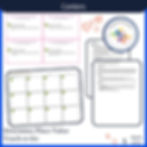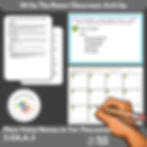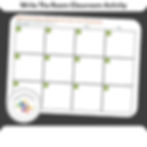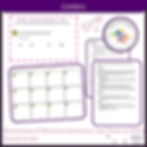Introduction to Multiplication Strategies for Diverse Learners
Teaching multiplication to diverse learners brings its own set of challenges and rewards. Not all students grasp concepts the same way, and it's crucial to adapt teaching methods to meet individual needs. Some learners might take more time, while others might grasp multiplication quickly but struggle with applying it. The key is flexibility and creativity in approach. Strategies such as using visual aids, breaking down steps, incorporating games, and connecting math to real-world scenarios can make a big difference. For instance, using objects or visual aids can help students better understand the concept of multiplication as grouping, making it less abstract and more tangible. Simplifying instructions and practicing with examples relevant to students' lives enhances learning and retention. Remember, the goal is not just to teach multiplication but to ensure all students can understand and apply it confidently.
Key Takeaway
Setting specific, measurable multiplication goals and using diverse strategies tailored to individual learning styles can significantly enhance student progress and engagement.
Understanding the Different Types of Learners in Special Education
In special education, it's key to recognize that students learn in various ways. Three types of learners stand out: visual, auditory, and kinesthetic.
Visual Learners: Prefer to see and observe. They find it easier to understand information through charts, diagrams, and written instructions.
Auditory Learners: Absorb information better when they hear it. They benefit from listening to explanations, discussions, and reading aloud.
Kinesthetic Learners: Need to move and do. They grasp concepts best through hands-on activities and experiments.
Knowing which category a student falls into can significantly affect how they learn multiplication. Tailoring approaches to fit each learning style not only makes multiplication more accessible but also more engaging for students with diverse needs.
Basic Multiplication Concepts to Start With
Starting with the basics is key when teaching multiplication to diverse learners. First, ensure students understand what multiplication is: combining equal groups. It's like adding the same number again and again. You can break this down into two crucial points: equal groups and repeated addition.
Equal Groups: Show students physical objects grouped equally, like five sets of three apples. This visual helps them grasp the concept of putting together equal sets.
Repeated Addition: Use simple addition to show that multiplication is a faster way to add the same number many times. For example, 3 + 3 + 3 + 3 = 12 is the same as 4 x 3 = 12.
Visual Strategies for Teaching Multiplication
When teaching multiplication to diverse learners, visual strategies are your friend. Many students find it easier to understand and remember things they've seen. Here are some effective visual strategies:
Objects and Pictures: Use everyday items like blocks or beads to show multiplication basics. For example, if you're teaching 2 x 3, lay out two groups of three blocks.
Drawings and Diagrams: Illustrate multiplication facts or problems on the board. Students visually see the connection between groups of numbers.
Multiplication Charts: A multiplication chart provides a visual layout of multiplication facts, helping students find patterns and relationships between numbers.
Hands-on Activities to Enhance Multiplication Skills
Hands-on activities can transform how students with diverse learning needs grasp multiplication. These activities make learning tangible, connecting abstract concepts to the real world.
Manipulatives: Use counting blocks or beads to physically group and count, making the idea of multiplication less abstract.
Interactive Games: Incorporate games that use dice, board pieces, and cards to help solidify multiplication tables in a dynamic and memorable setting.
Visual Aids: Utilize multiplication charts and visual multiplication apps to enable students to visualize the multiplication process and patterns.
Real-Life Scenarios: Use scenarios like doubling or halving recipe ingredients to strengthen a student's understanding and application of multiplication.
The Role of Technology in Multiplication Learning
Technology plays a pivotal role in teaching multiplication to diverse learners, providing personalized and engaging learning experiences.
Customizable Apps and Software: Tailor lessons to individual pace and understanding with interactive tutorials and animations.
Endless Practice Opportunities: Access to numerous multiplication exercises that adjust in difficulty as skills develop.
Engaging Elements: Use points and badges to make learning feel more like a game, motivating students to practice more.
Adapting Multiplication Techniques for Individual Needs
Every student learns differently, especially in special education. When teaching multiplication, adapting techniques is key.
Visual Learners: Benefit from seeing problems worked out on paper or a whiteboard.
Auditory Learners: Gain from hearing problems repeated aloud.
Kinesthetic Learners: Grasp concepts more effectively through physical objects like blocks or counters.
Progress and Setting Learning Goals
When teaching multiplication to diverse learners, it’s crucial to regularly assess their progress and set clear learning goals. Quick checks or discussions can shed light on what they’ve grasped and where they’re struggling. Use their performance to craft personalized learning objectives and celebrate small victories to keep motivation high.
Engaging Parents and Caregivers in Multiplication Learning
Getting parents and caregivers involved in multiplication learning is key. Practice doesn't stop when the school bell rings. Here’s how to make it a team effort:
Share Resources: Hand out practice sheets or recommend free online multiplication games.
Daily Activities: Encourage practice through cooking (measurements) or shopping (multiplying prices).
Positive Reinforcement: Celebrate progress to boost confidence and foster a love for learning.
Summary: Key Takeaways for Developing Effective Multiplication Strategies
Multiplication doesn't have to be a roadblock for diverse learners. Tailor strategies to make sense to them, breaking down the concept into digestible parts. Use visual aids, integrate technology, and make practice engaging. Encourage group work and celebrate progress. Patience and perseverance are your best tools.
Explore more resources to support your teaching:

































